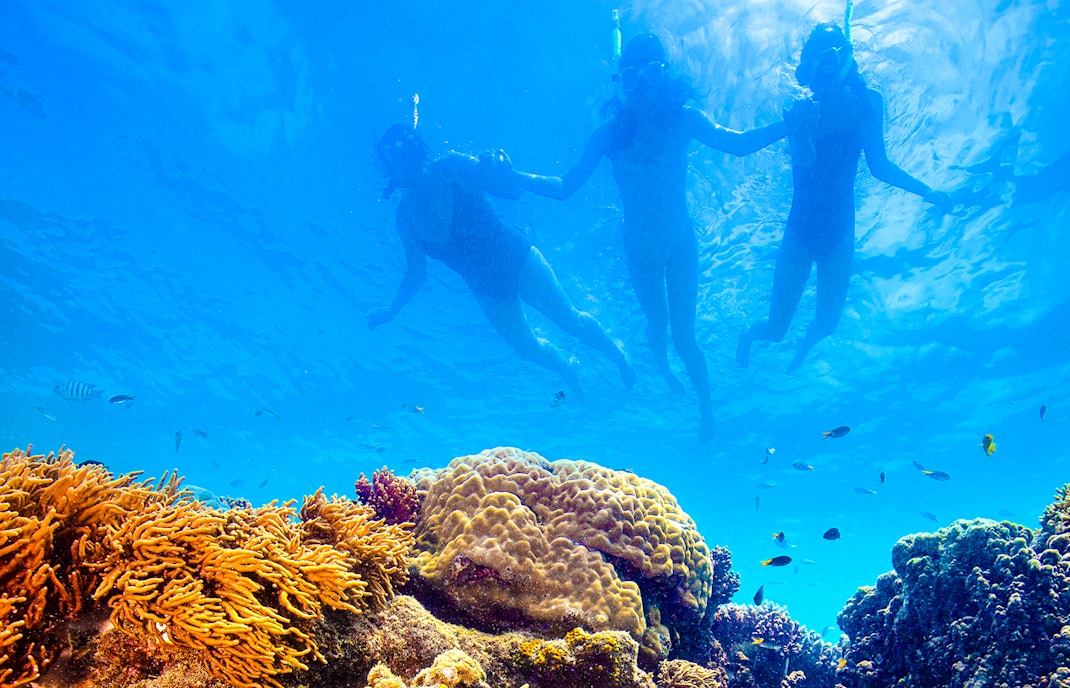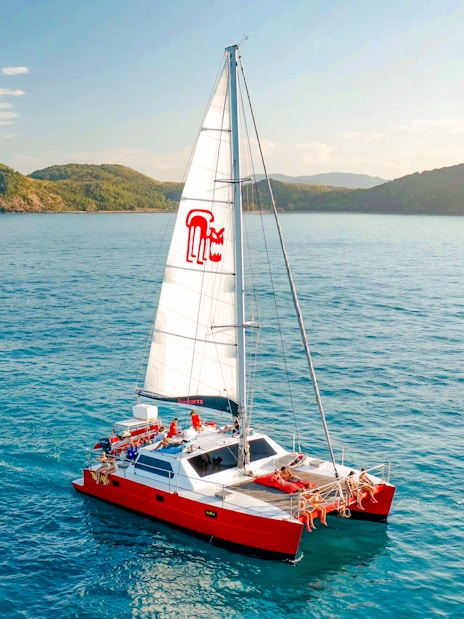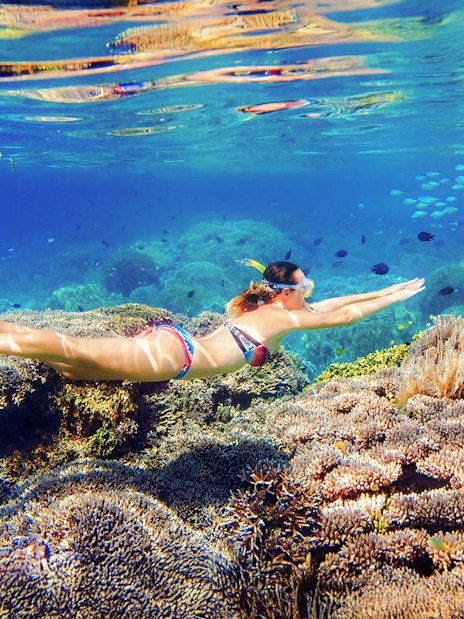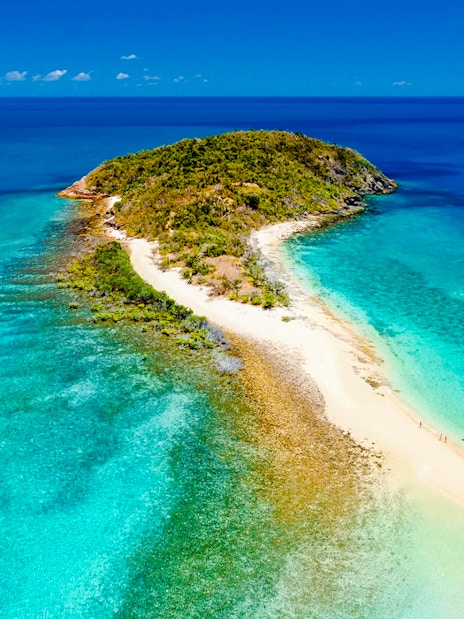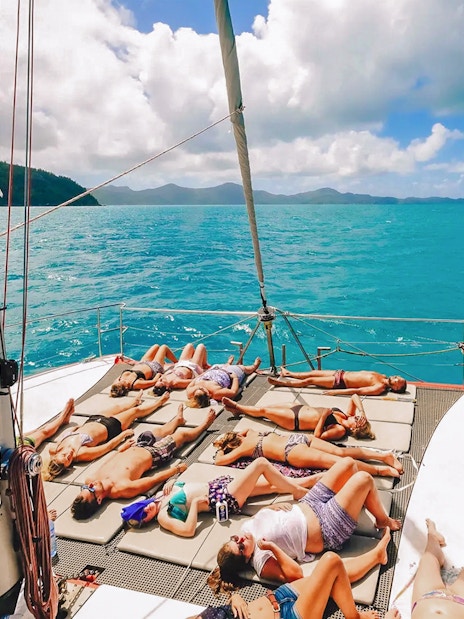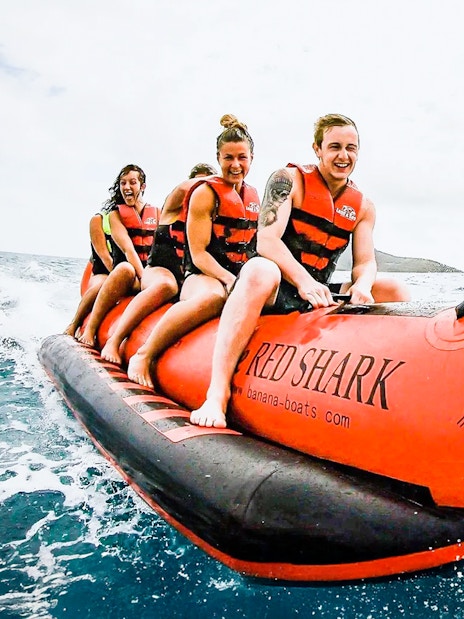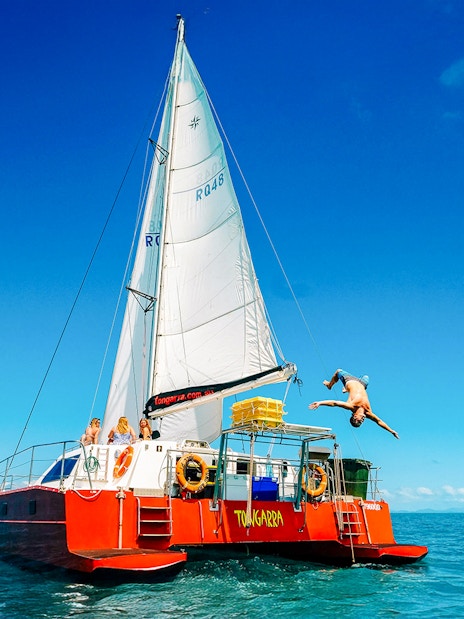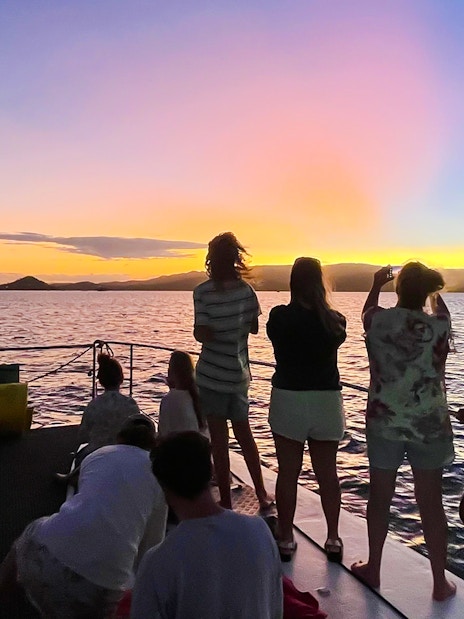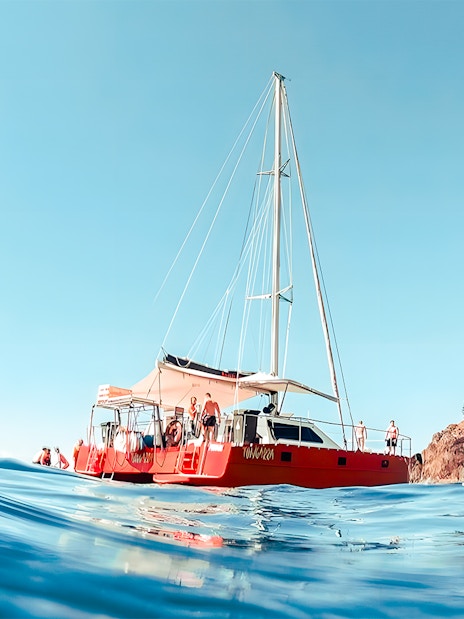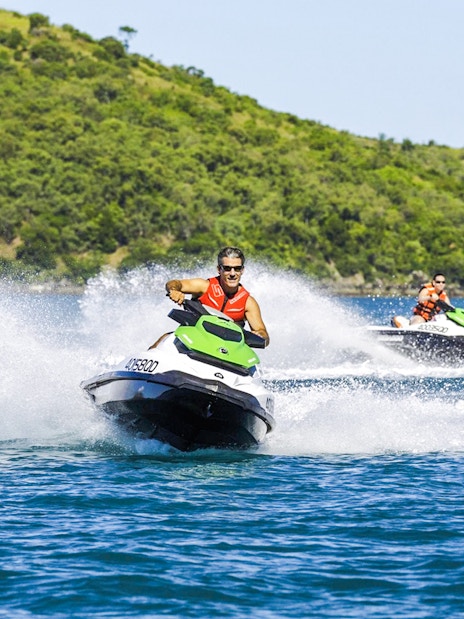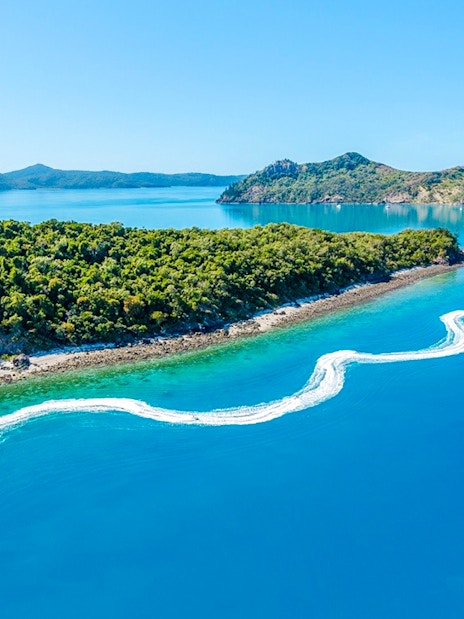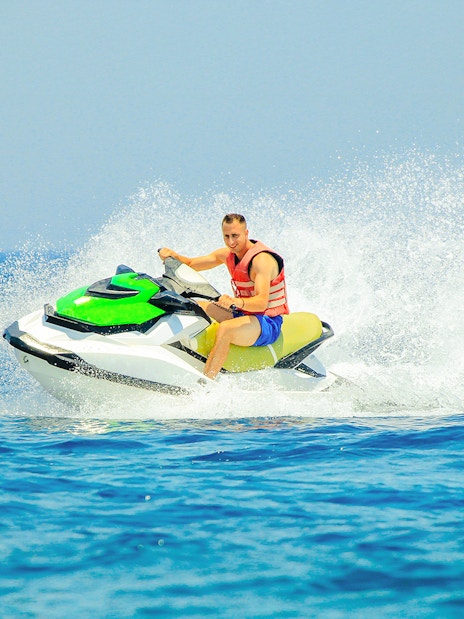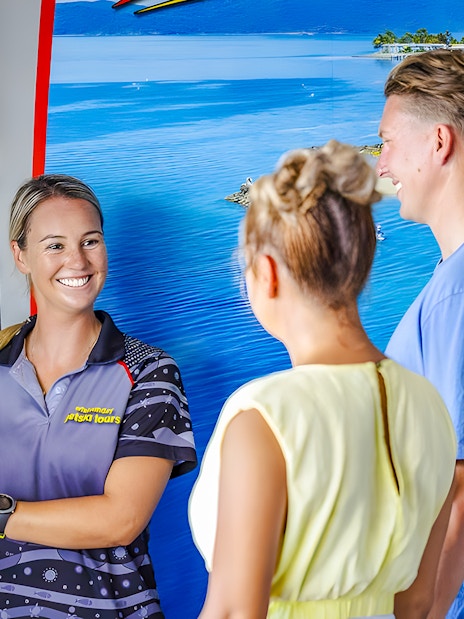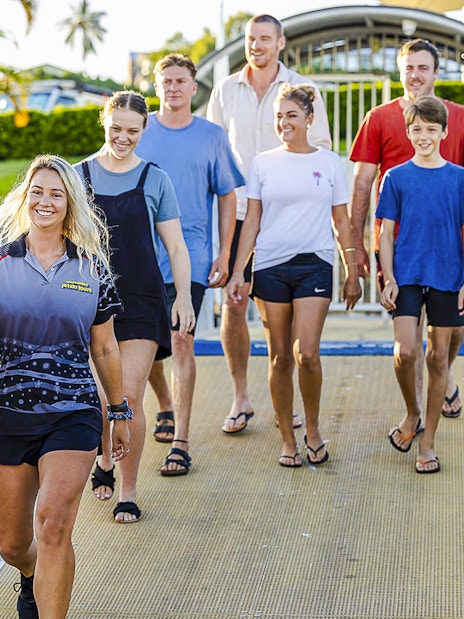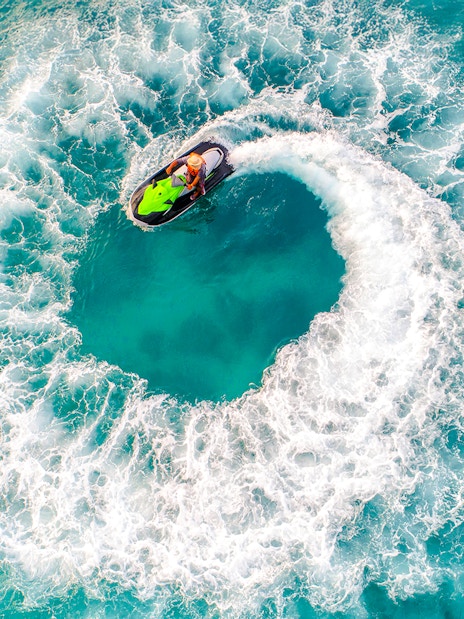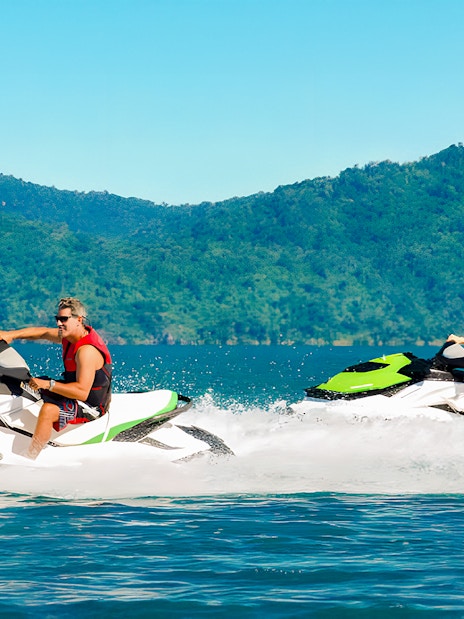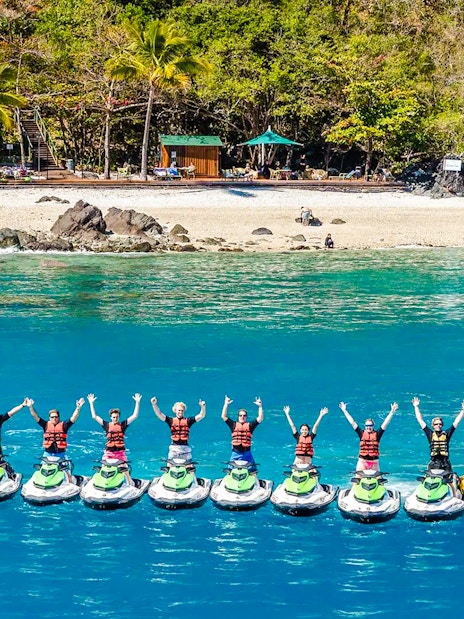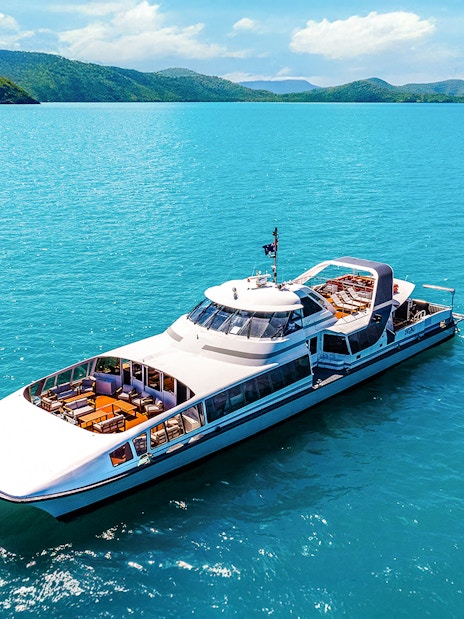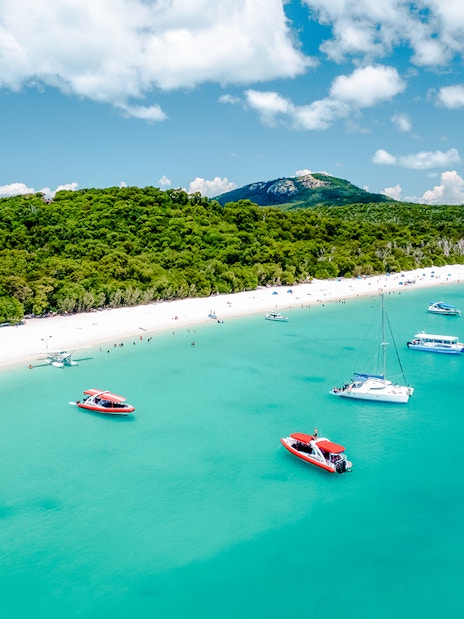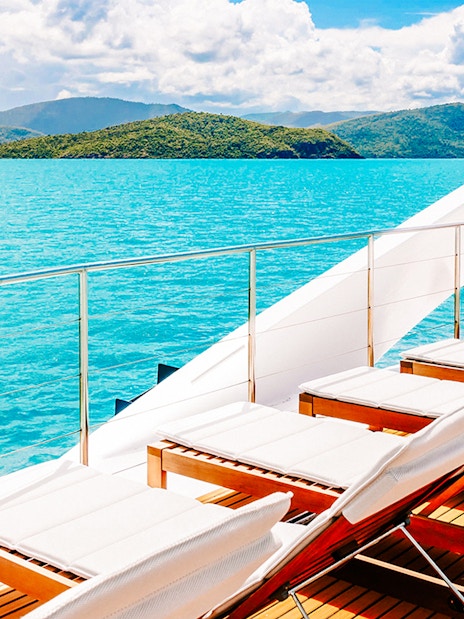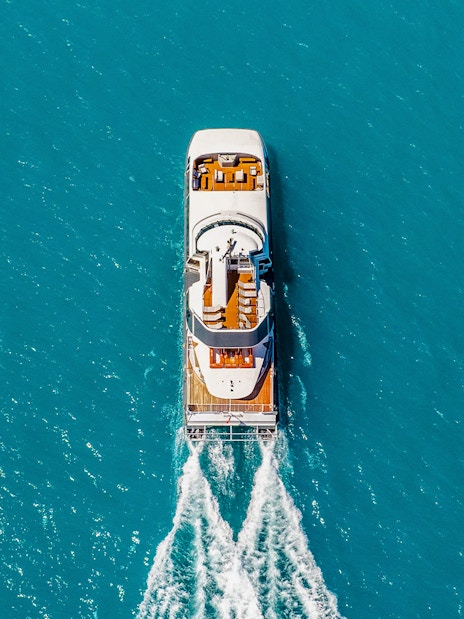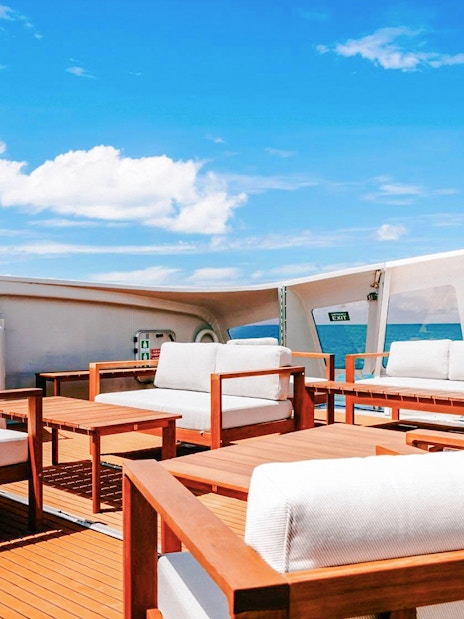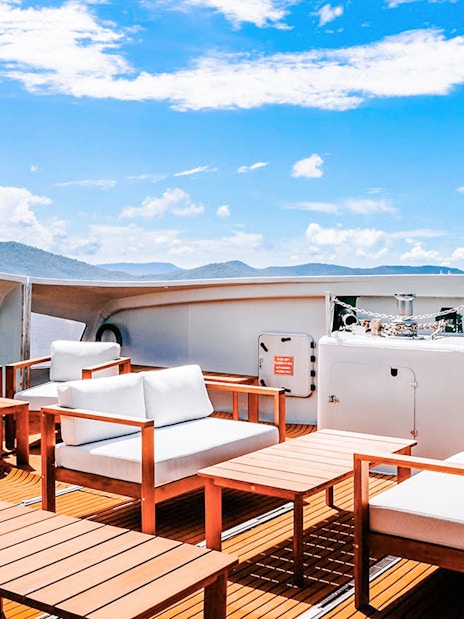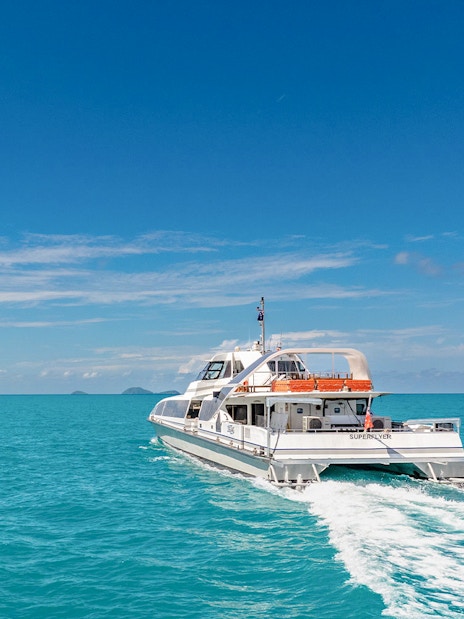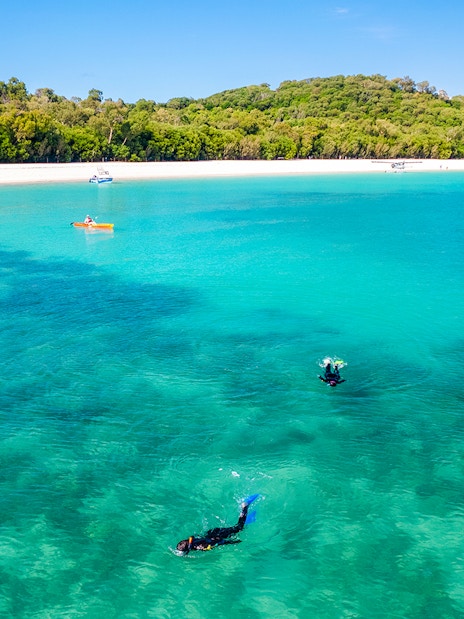Year-round forecast
Instead of four seasons, the Whitsundays have two main patterns: a hot, wet season from December to March, and a cooler, drier one from April to November.
In summer, you might get short afternoon showers that refresh the rainforest and waterfalls. Winter brings clear blue skies, calm seas, and migrating humpback whales that put on a show near the boats.
Coral here stays healthy thanks to tidal flushing, and the best visibility for snorkelling is from June to October. From November to May, stingers (box jellyfish and irukandji) can be present, but tour operators provide Lycra suits, vinegar stations, and strong safety measures, so you can swim safely.
No matter when you visit, bring reef-safe SPF 50+, a quick-dry rash shirt, and sunglasses. The sun can be strong even on cloudy days!
.svg?auto=format&w=156&h=48&q=90&crop=faces&fit=crop)



